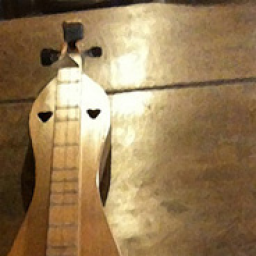Just String info.
Instruments- discuss specific features, luthiers, instrument problems & questions
Lilley Pad:
Hey kids, here we go again. I think this musical journey is starting to hurt my head. any one out there know of a good website or link about strings. Looks like there's 80/20 bronze, phosphor bronze, nickel bronze, flat top, nickel wound, XS plain steel, XT plain steel, and so on. Then of course we have gauge sizes. I think my brain is starting to swell
The choice of string and string size depends on the instrument you have, the voice quality it is capable of, the voice quality you want, the tuning scheme you want for its strings, and the vibrating string length ( aka VSL, the distance between the nut and the saddle).
There are various tools to help get the right string set. But there are some surprises to be gained in unconventional string choices.
No wonder you're getting brain swell!
But if you furnish more details than listed above, luthiers and musicians can give some guidance. Regarding what you did list, here's a luthier's experience with them:
80/20 bronze refers to the mixture of copper and tin in a the windings of a wound string. It can be initially bright, even bell-like, but quickly loses its brilliance. But that will depend on the tension of the string, which is determined by the VSL and the pitch it is tuned to.
Phosphor Bronze is a warm wound string that holds its warmth and brilliance over a range of tensions, though higher tension will bring out its brilliance too.
Flat-top wound strings have the winding flattened to relieve the 'zing' during quick traverses from note to note without raising the finger. Some people do not appreciate the slight loss of brilliance that results with flattening the tops of the round winding wire.
Nickel wound strings are quite a bit more brilliant than 8/20 or Phosphor Bronze.
Plain steel wire is used for higher pitches and/or to control the finger pressure needed to firmly fret the string's note. Steel strings can be chosen by gauge (measured in thousandths of an inch, in my experience), to define the tension at which a string is operating when tuned to a designated pitch.
As for XS and XT strings, that seems to be a D'Addario innovation that alters the warmth of the string with coatings. Here is a video illustrating the difference between XS and XT strings.
As for string gauge, or diameter, these choices usually involve the pitches you want the strings tuned to (the tuning scheme), the instrument's VSL, the warmth vs brilliance you want, and the optimum finger pressure for fretting notes. All those will depend, also, on the qualities of the music instrument you are concerned about.
Hope that helps!
updated by @dwain-wilder: 05/15/25 05:16:59PM


